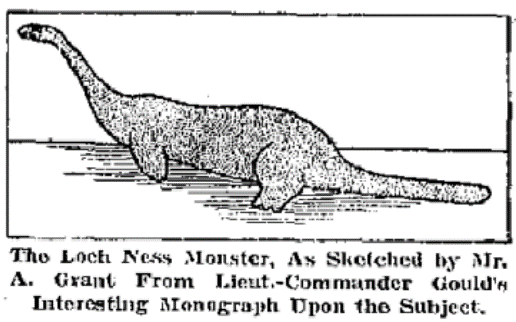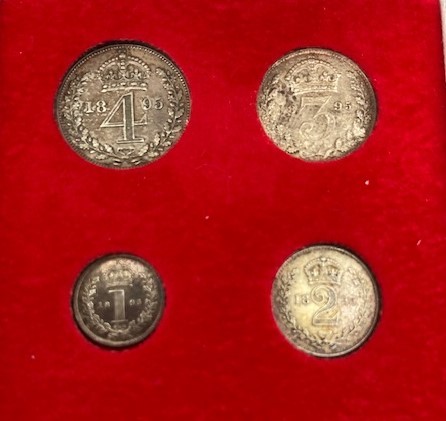What’s On at The Met
5th Apr at 13:00 & 15:30 Easter Bunny Dance £5
8th Apr at 13:00 & 16:00 Easter Extravaganza £10
Every alternate Tuesday afternoon throughout April at 14:00 is ‘Dance for All’ and ‘Afternoon Dancing’ price £4 per session.
For more information Click Here or tel 01495 533195
Museum opening times
The Museum is open to the public, free of charge:
Thursday* to Saturday 10am – 1pm
March 100 Club
This month’s prize numbers were drawn by members Audrey Osland and Margaret Cook and the lucky winners are:-
No 25 Margaret Phillips £20
No 3 Colin Price £10
If you would like to join our 100 club and be in with a chance of winning, it costs just £1 a month. Ask at the museum for further details
 Easter Egg Hunt
Easter Egg Hunt
The museum will be hosting our usual Easter Egg Hunt which will be starting on Saturday 1st April and will run throughout the school holiday and will cost 50p per child.
Springfest
Saturday 15th April 10am – 5pm
This year’s Springfest is being held on Saturday 15th April and will run from 10am until 5pm. The museum and its café and gift shop, will be open until 5pm. A (free) Face Painter will be sited within the museum.
Howells of Cardiff
Another great institution has been lost. Sunday 26th March 2023 saw the closure of the biggest and one of the ‘poshest’ stores in Wales with the closure of Cardiff’s House of Fraser though until 2010 it was known simply as ‘Howells’. James Howell was the son of a farmer from Pembrokeshire and he opened his first drapery store in a small shop on The Hayes on 21st October 1865.

By Seth Whales, Own Work
In August 1867 the store moved to St Marys Street but it would be many years before it extended to be the huge sprawling shop that it was. James Howell died in 1909 and his 11 children formed a private limited company, James Howell & Co Ltd. It changed hands in the 1960s before being sold to House of Fraser in 1972.
https://en.wikipedia.org/wiki/Howells_(department_store)
Nessie
 Loch Ness is a large, fresh-water lake near Inverness in Scotland. It takes its name from the River Ness which flows from its northern end and it is the second largest loch in Scotland (the largest being Loch Lomond) but due to its sheer depth; around 230m/755 feet, it is the largest lake by volume in Great Britain. It is in the murky depths of this lake that supposedly lurks ‘Nessie’…
Loch Ness is a large, fresh-water lake near Inverness in Scotland. It takes its name from the River Ness which flows from its northern end and it is the second largest loch in Scotland (the largest being Loch Lomond) but due to its sheer depth; around 230m/755 feet, it is the largest lake by volume in Great Britain. It is in the murky depths of this lake that supposedly lurks ‘Nessie’…
Photo of Loch Ness on left courtesy of museum member Alison Williams
Reports of a mythical creature at Loch Ness can be found as far back as the 6th century but modern day interest in ‘Nessie’ started in July 1933 when one George Spicer and his wife reportedly witnessed ‘a most extraordinary form of animal’ passing in front of their car. The serpent-like creature was described as being large, around 4 feet high and 25 feet long with no apparent legs. It moved rapidly and disappeared into the loch leaving a trail of broken undergrowth in its wake.
The following year a chap by the name of Arthur Grant claimed to have an encounter with the creature. He was travelling alongside the loch on his motorbike at 1am one January morning and, just like George Spicer, he too claimed the creature crossed the road in front of him. He said he dismounted his bike and followed it until it disappeared into the lake. Grant made a sketch of the creature which was dismissed by many as that of a seal or otter.
Many photos of Nessie exist with the most famous being one taken by gynaecologist, Robert Wilson and published in the Daily Mail on 21st April 1934. The photo showed a large head and elongated neck similar to the sketch made by Arthur Grant, poking up above the surface of the loch. Wilson refused to have his name associated with the photograph and so it became known as ‘Surgeon’s photograph’. For 60 years the photo was accepted as evidence of the existence of Nessie however since 1994 it is now believed to have been an elaborate hoax.
Nessie continues to intrigue and there are recorded sightings of her as recently as last year. So if you have plans to visit Scotland, have your camera to hand, you never know when Nessie might put in an appearance!
Below; the sketch made by Arthur Grant and to view ‘surgeon’s photograph’ use this link

By Anonymous, Wikipedia
Sally Murphy
State Pensions
My mother was able to access her State Pension at 60 years of age. I myself will have to wait until 66, my sister 67. Am I feeling hard done by? Well I was until I found out that when The Old Age Pensions Act became law in January 1909, only people over 70 could access it and even then they had to meet certain strict criteria to receive their five shillings a week – that’s 25p to you youngsters – with married couples getting 7s 6d (37.5p). Unlike today’s State Pension though, it was non-contributory with the cost being borne soley by taxpayers.
Maundy Money
Maundy Thursday which this year will fall on 6th April, is steeped in history and tradition and this year will be unique in that it will be the first Maundy ceremony of King Charles III.
The ceremony of Maundy Thursday is thought to have originated with the bible and the washing of the disciple’s feet by Jesus. Christians as far back as the fourth century are known to have picked deserving individuals, washed their feet and presented them with gifts; usually of food or clothes. The first Monarch to get involved with the tradition of ‘Maundy Thursday’ was King John who, in 1213, washed the feet of thirteen poor men and gave them each one penny. This led to ‘Maundy Thursday’ being renamed ‘Royal Maundy’. The tradition of the washing of the feet though has ended, with the last Monarch to indulge in this being King James II in 1685.
In 1363, 50-year old King Edward III, presented gifts to fifty men and this led to the number of gifts being linked to the Monarch’s age with King Henry IV making this official with a decree. With King Charles being 74 years old, this year there will be 74 Maundy gifts.
The tradition evolved over the coming centuries with the gifts varying from food and clothing to coins. Any coins given were always intended to be spent, and not just a ‘keepsake’; consequently coins prior to 1670 were no different to coins in general circulation but from 1670 on, a special dated set of four coins appeared and this is still the case today. Maundy coins have always been made of sterling silver, apart from a brief period between 1920 and 1947 when the silver content was reduced by 50% due to the increase in the price of silver and the financial pressure the country was under due the cost of the First World War.
The tradition of Maundy Thursday was firmly established during the long reign of our late Queen Elizabeth II who handed out Maundy Money almost every year, missing only a very small number, once when she was about to give birth and a few occasions when she was on overseas state visits.
With the decimalisation of our currency in 1971, while all other coins changed, the Maundy coins did not other than they were now worth the equivalent of ‘new’ pence.
These days a set of four coins are made to order by The Royal Mint with the order for the coins personally signed by the reigning Monarch. Each coin is marked 1p, 2p, 3p and 4p and are legal tender though they are not used as circulating currency. And of course, this year’s set will be the first to bear the head of King Charles III.
Below is a set of sterling silver Maundy coins bearing the head of Queen Victoria and which belongs to my hubby.

For more information on the tradition of Maundy Money, use this link
Sally Murphy
WASHDAY MONDAY
 Washday Mondays are a thing of the past. In these days of washing machines and driers, most of us can do our washing whenever we want but there was a good reason in days gone by. Basically, it would take so long to get your laundry washed, dried and ironed that it was likely to take you all week, you would have Sunday off and then start all over again. I used to think Monday was the driest day of the week on average and that perhaps that was an added reason for focussing on Mondays but I'm sure I read somewhere that the wettest day of the week in Wales is actually a Tuesday.
Washday Mondays are a thing of the past. In these days of washing machines and driers, most of us can do our washing whenever we want but there was a good reason in days gone by. Basically, it would take so long to get your laundry washed, dried and ironed that it was likely to take you all week, you would have Sunday off and then start all over again. I used to think Monday was the driest day of the week on average and that perhaps that was an added reason for focussing on Mondays but I'm sure I read somewhere that the wettest day of the week in Wales is actually a Tuesday.
I started thinking how washdays have changed in my lifetime. As a child in the early fifties my grandmother would do her washing in a large zinc bath which hung on a nail in the yard. She used a rubbing board, a very large bar of soap, a manual mangle, and then hung the washing on the line to dry – this all took place on the yard. She didn't use rubber gloves so her hands must have been sore. She didn't wash sheets; they went to the Chinese laundry as did my the sheets from my own house. They were collected and then brought back wrapped in brown paper. The sheets all had an identification mark in one corner but I can't tell you any more about the Chinese laundry – that's something to investigate.
The first washing machine I remember in our own house was a top loader with a big paddle inside that was pushed back and forth manually – hard work. As was using the manual mangle attached to it. That was followed by an electric washing machine with an electric mangle. The spin drier was a separate entity altogether and as it was impossible to load it evenly it invariably danced all around the kitchen floor.
Nowadays we might add conditioner or stain remover or magic whitener. In those days you added a bag of ‘Reckitts Blue’ to make things look whiter, and some starch to make things look crisper.
Pegs were often the big dolly pegs bought from gypsies who sold them door to door. And of course there were no rotary washing lines. The washing line was quite literally a long line in the yard or garden and which was held aloft by a prop.
As I look at my washing machine with its range of washing and spinning programmes I give a sigh of relief. I also have a tumble drier if we get a run of wet weather but I try not to use it as it is an expensive luxury, especially with energy costs so high at the moment.
Well, those are my washday reminiscences. Do you have any? And does anyone have more information about the Chinese laundry?
Jen Price
Boldly Going…
For more than 20 years the Houston based memorial firm Celestis has been flying DNA and cremated remains into space and they are planning a space flight later this year to put a craft in an orbit around the sun. This memorial ‘Enterprise Flight’ will lift off from Cape Canaveral in Florida and will be unique in that it will be the first carrying the DNA of former US Presidents; George Washington, Dwight D Eisenhower, John F Kennedy and Ronald Reagan. But that’s not all it will be carrying. Also aboard will be ashes from over 200 people including some actors from Star Trek namely DeForest Kelley who played Dr Leonard ‘Bones’ McCoy, Nichelle Nichols who played communications officer Lt Uhura and James Doohan who played Chief Engineer, Lt Commander Scott. And it doesn’t end there; the ashes of the show’s creator, Gene Rodenberry will also be onboard as well as those of astronaut Philip Chapman who worked on the ground as the mission scientist for Apollo 14. Prices for these memorial space flights don’t come cheap; prices start at $2995 for a short flight to $12995 for a deep space flight.
Top Of Page
© Abertillery & District Museum 2023 
